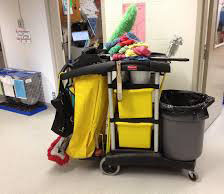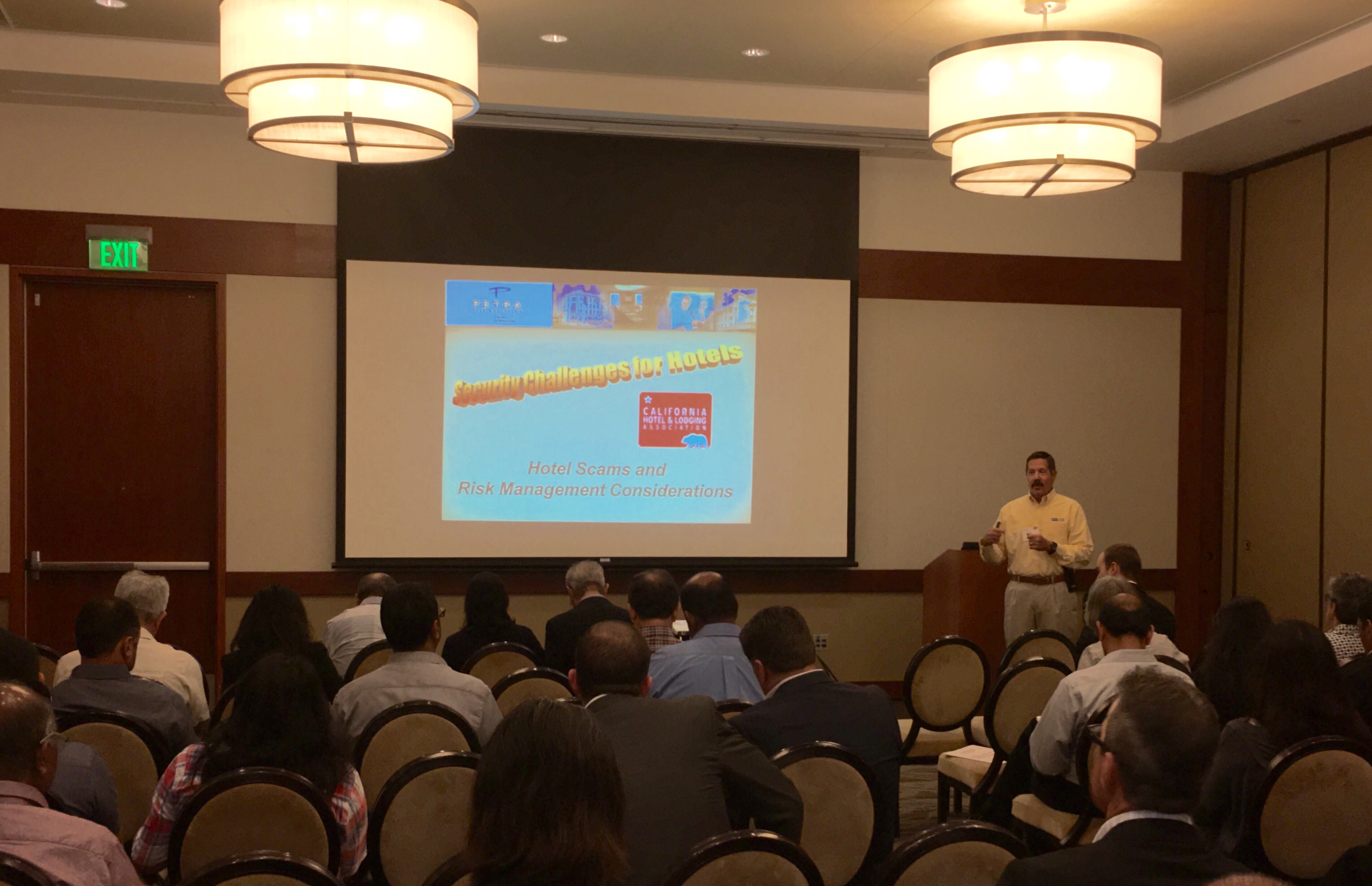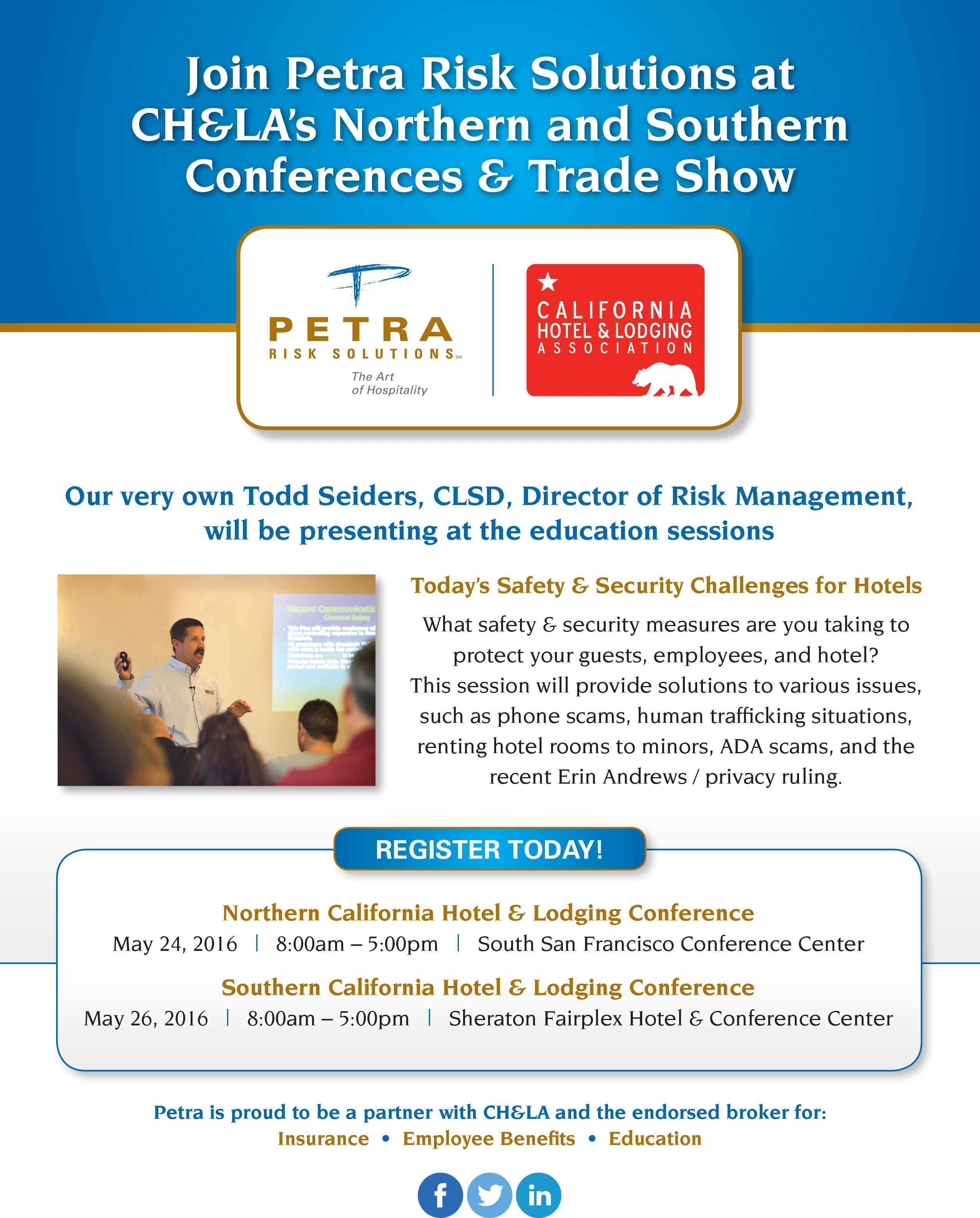Tag Archives: Hospitality
Join Petra Risk Solutions at CH&LA’s S.A.F.E Forum & Expo
Comments Off on Join Petra Risk Solutions at CH&LA’s S.A.F.E Forum & Expo
Filed under Conferences, Crime, Guest Issues, Hotel Employees, Hotel Industry, Risk Management, Theft, Training
What’s your data breach response plan?

While businesses prefer to avoid cyber perpetrators entirely, these days nearly all organizations are at risk of a breach.
As the number of incidents (and claims) continues to rise, the prudent strategy is for firms to not only work diligently to prevent an intrusion, but also to have a plan in place to respond quickly and effectively if they suspect information has been compromised.
A data breach response plan proactively outlines the necessary actions a business must take, providing a framework that can be regularly matched against emerging risks and updated if the firm’s situation changes — for example, if additional staff are added in key data privacy or technology roles or if partnerships are formed that could change the way sensitive information is processed.
Developing a data breach response plan, one that is easy to follow and quick to implement, gives businesses time to prepare the necessary resources and mitigate the damage an exposure can inflict. Leaving key tasks to the last minute, such as scrambling to identify qualified outside legal counsel, is unwise and can significantly impact the timeliness and expense of a breach response. Likewise, pulling the plug on a single server without seeking guidance from an experienced technology expert may not shut down the unauthorized access that caused the exposure, thus leaving the business open to further harm. Worse, it may even erase key information a computer forensics company may need to assist the investigation. Getting the firm’s ducks in a row in advance of any breach is a far more effective cyber mitigation strategy.
One component of many small business breach response plans is accessing the financial and technical support available through a well-structured Cyber Liability insurance policy. Coverage options vary widely, so businesses (or the insurance broker) must carefully examine their needs before crafting a policy. For those firms with lean internal resources and thin financial margins, the right insurance can be a key asset when it comes to implementing a solid breach response plan. Below, three steps that will help organizations mitigate data breach disruptions before they occur.
1. Assemble the team
Who needs to be involved in responding to a breach? Before attempting to pull together more than a cursory list of post-exposure action items, it’s critical that the firm identify those individuals or groups that should be contacted in the event of a potential breach. The team will vary from one business to the next, but most organizations will want to include representatives from the executive group, legal (either internal or an outside consultant), privacy or information security, risk management, information technology, human resources and public relations.
Given the growing reliance on external partners — cloud providers, payroll processors and the like — firms should also consider where vendor touchpoints exist and how or when those third parties will contribute to the breach response process. They may need to be included on the contact list or they may even be responsible for raising the initial alarm if a breach occurs. It’s also important to ensure vendor contracts clearly spell out the company responsible when a breach occurs and who is liable for notifying those impacted. Other vendors are also commonly part of the response team, such as media relations consultants experienced in crisis management and notification firms with the resources necessary to quickly inform breach victims about the situation.
If the business has Cyber Liability coverage, the insurance company should also be part of the breach response plan. There are support services included in many policies that will be helpful in the event of an exposure, ranging from forensic investigation teams to data recovery specialists. To maximize the value of any applicable coverage, firms must be ready to access available features quickly and through the most efficient channels.
Comments Off on What’s your data breach response plan?
Filed under Crime, Insurance, Liability, Management And Ownership, Risk Management
Managing the Storeroom Right
When hotels talk about inventory management, it is usually in terms of rooms—you can’t make money without guests in rooms, whether it is a guestroom, meeting room, or ballroom. But let’s step back and think about what it takes to ensure you have those rooms ready for weddings, groups, family reunions, conferences, and individual travelers.
Have you ever had to scramble to a Plan B solution because you were out of stock on a repair item, such as a joint for the bathroom sink or paint to touch up the trim, or inexplicably ran out of light bulbs? What did it cost you to send someone out on a special run to pick up that item or move a guest to another room while you waited for the part to fix that sink? Even without a maintenance problem, turning rooms can be delayed if your staff does not have the cleaning items needed to do their jobs, despite the significant amount of money you budget for those supplies.

As you can imagine, the concept of inventory management is one that can apply to the products used to maintain and repair your hotel to keep it running at optimum levels as well.
Through research, Grainger discovered that among organizations surveyed, employees leave the supply closet empty-handed 22 percent of the time because they cannot find what they’re looking for. It could be because that item is misplaced, out of stock, or being used by someone else in the hotel. Whatever the cause, the item isn’t there when needed, despite the investment you made to purchase and stock that item. The chances are extra products will be purchased to fix that specific issue, and the worker will either hold on to that extra for fear of needing it again and not being able to find it, put it where he or she believes it goes (which may not be the same place other workers look for it), or place it where it goes and in doing so, find the missing product (because he or she did not see it the first time or it was returned to its proper location after being used). That translates into wasted time and money, and if it happens enough, a world of frustration.
But how can that happen when it seems like your supply rooms are exploding with products, and some of them seem like they have been there for ages? Interestingly, the same research mentioned above also revealed that only 5 percent to 15 percent of maintenance, repair, and operations (MRO) inventories are frequently used, and an equal percentage of the items are duplicated—because you cannot afford to not have a backup supply. You want to avoid having too much of an item, yet do not want to be caught without enough to meet immediate needs. You want to ensure the right products are in the right place at the right time with minimal expense and effort.
Inventory management programs can help. Whether you choose to manage your MRO inventory yourself or have the supplier manage it for you, there are benefits to be gained. A systematic approach based on real usage data can help you make sure you have the right products on hand to maintain your facility, without over investing in items that you don’t need.
For more info: ( http://bit.ly/29Hdo9O )
Comments Off on Managing the Storeroom Right
Filed under Maintenance, Management And Ownership
How Overtime Rule Will Affect Hospitality
It might only be June, but hoteliers are already preparing for how the U.S. Department of Labor’s (DOL) recently announced overtime rule will impact their properties when it takes effect Dec. 1. The rule, introduced on May 18 by the Obama administration, will broaden the number of workers eligible for overtime pay by raising the salary threshold for exempt workers to $47,476 from $23,660 per year.
Ryan Glasgow, Hunton & Williams labor and employment lawyer, has been advising employers in preparation for the final DOL rule, which will likely set the salary requirement for the professional, executive, and administrative exemptions at 40 percent of the national average for all non-hourly compensation in all industries.

“The DOL’s intention in increasing the salary was to increase the opportunities and increase the compensation pay to a lot of workers,” Glasgow says. “About 4 million workers are either going to be entitled to overtime or now receive an increase salary as a result of the change.”
Since hotels employ a large number of workers who fit the bill, many properties will go through an adjustment period as they restructure based on employees’ current wages.
“In the hospitality area, it’s the frontline, entry-level managers who will mostly be affected,” Glasgow says. “They have been, thus far, exempt under the Fair Labor Standards Act (FLSA) executive exemptions. The problem is a lot of those frontline managers are currently making somewhere between $23,000 and $47,476. The hospitality industry is going to take a look at each one of those employees and decide if they’re going to increase that salary to the $47,476 level, or reclassify this person as non-exempt.”
For more info: http://bit.ly/29g9YeN
Comments Off on How Overtime Rule Will Affect Hospitality
Filed under Employee Practices, Hotel Employees, Hotel Industry, Labor Issues, Management And Ownership, Uncategorized
Keeping Hotel Housekeepers Safe
A hotel housekeeper’s duties can be grueling and intense – and can result in serious injuries.
Bureau of Labor Statistics data from 2013 shows that hotel and motel workers had a nonfatal injury and illness rate of 5.4. The rate for all industries was 3.5.
“As more amenities continue to be offered in hotel rooms, housekeepers often are having to work even harder and more quickly,” said Gary Allread, program director of the Institute for Ergonomics at Ohio State University in Columbus.

Advocates are calling for stronger protections and better ergonomics training for hotel housekeeping workers.
More work, more hazards
In 2012, hospitality workers union UNITE HERE sent a petition to the California Department of Industrial Relations’ Occupational Safety and Health Standards Board. The petition called for a standard to protect hospitality workers as hotels compete to offer more luxurious settings for their guests. Upgraded mattresses can weigh more than 100 pounds, UNITE HERE claims, and bath linen is larger and heavier – putting housekeeping workers at risk of overexertion. More amenities, such as larger mirrors and TVs, have to be cleaned.
“What you’re seeing now when you go into the hotel room, it’s not just two pillows on a bed, it’s four or five,” said Lorne Scarlett, industry specialist with the Workers’ Compensation Board of British Columbia, also known as WorkSafe BC. “That process they go through stuffing a pillow, they’re doing that four to five times per bed. The cleanliness of the room is scrutinized by the larger, luxury hotels. They’re not just doing a light dust. They’re doing a very determined clean each time.”
According to Ohio State University, other injury risk factors are:
- “Forceful exertions,” including pushing heavy carts and using vacuum cleaners
- Awkward postures while cleaning bathrooms and other areas
- Repetitive motions, such as cleaning mirrors and changing pillowcases Maintaining postures for long periods
- Little rest
“The good thing is we can reduce those risks through just plain, out-front awareness and education,” Scarlett said.
For more info: ( http://bit.ly/2949lUp )
Comments Off on Keeping Hotel Housekeepers Safe
Filed under Hotel Employees, Hotel Industry, Injuries, Risk Management, Training, Workers' Compensation
How Employee Feedback Can Help Hoteliers
Feedback is important for any industry, as it shows quite clearly what works, and what could be improved upon. In the service industry, there are different types of feedback. Customer feedback is most commonly discussed and used, while employee feedback tends to remain focused within the HR circle. Increasing the scope of what is asked within the feedback can improve the hotel service by astonishing amounts. This is because employees know the business in and out. They have regular experience with anything that they recommend or believe is not good practice.

Identifying Problems
A customer will give a hotelier comprehensive feedback. But a hotelier benefits from employee feedback as well, as a problem can be brought to light before a brand new customer is aware of it. Hoteliers strive to give customers an unforgettable experience so that they come back and/or spread good word of mouth about the hotel services. Anything that prevents the customer from having to face something that leads to a negative point in the feedback should be adopted.
Consider a hotel that is known throughout the city for its dinner buffet. Feedback from multiple customers shows that customers prefer multiple options for dessert (as the rival hotel buffet has started providing) instead of just a fixed dish. Had employee feedback been the norm, this problem at this hotel would have been recognized long before, because employees would have noticed it themselves during regular customer interactions.
Making Employees Feel Valued
When a customer tries a restaurant, even when the food and wine is excellent, if the service isn’t up to par, the overall impression of the establishment is diminished. Of course, correct training of employees is important. However, it is not enough to just hire the right people. Hoteliers need to boost morale and make employees feel that they matter to encourage better performance.
According to Hubspot, 39 percent of employees don’t feel valued at their workplace. When management invites employee feedback, it suggests that employee opinions are considered to be essential. This helps form a connection between employee and employer.
Customers notice when they walk into a place and the energy of the employees is so infectious, that it starts rubbing off on them. The instant impression of any place where employees are enjoying their work, and even having fun while doing it, is overwhelmingly positive. To create such an atmosphere, the employees have to feel valued at their workplace. Inviting employee feedback is one such tool that makes them feel like a part of the business. Hoteliers can achieve wonders with employees who are driven by motivation that is more than just a weekly or monthly monetary return.
For more info: (bit.ly/22Q7955)
Comments Off on How Employee Feedback Can Help Hoteliers
Filed under Employee Benefits, Employee Practices, Employment Practices Liability, Hotel Employees, Management And Ownership
Successful Education Session at CH&LA SoCal Conference
Petra Risk Solutions had a successful education session at CH&LA‘s SoCal Conference. Todd Seiders, CLSD, Director of Risk Management, presented “Today’s Safety & Security Challenges for Hotels”. Over 100 people attended! They walked away educated and with a better understanding on how to handle phone scams, human trafficking situations, renting hotel room to minors, ADA scams, and the recent Erin Andrews/ privacy ruling. 
Comments Off on Successful Education Session at CH&LA SoCal Conference
Filed under Claims, Conferences, Crime, Guest Issues, Hotel Employees, Hotel Industry, Hotel Restaurant, Insurance, Risk Management, Theft
Join Petra Risk Solutions at CH&LA’s California Conferences

For more information on the Northern California Hotel & Lodging Conference, click here!
For more information on the Southern California Hotel & Lodging Conference, click here!
Comments Off on Join Petra Risk Solutions at CH&LA’s California Conferences
Filed under Conferences, Hotel Industry, Management And Ownership, Risk Management, Technology
Next-Gen Leaders Must Be Open to Change
This year’s Asian American Hotel Owners Association convention was all about success and how to achieve positive performance in an era of new brand launches, generational leadership change, and external disruptors.
Mike Leven, president and COO of Las Vegas Sands Corporation and an original organizer of what would become AAHOA, kicked off Thursday’s general session with a call to action for the rising tide of second-generation Asian-American hoteliers who are growing their own footprints in the business.
“What happens when you are successful?” he asked. “You stop doing what made you get there in the first place, and that’s where the danger comes in.”
Leven said that as the industry faces change, the next generation of leaders must change with it, especially if they hope to be successful during downturns.
“The status quo is a prescription for failure,” he said. “You have a responsibility to continue to be dynamic in the search for change, for doing things different, for not being satisfied.”
Hotel franchise company executives echoed those statements on Thursday’s “Industry CEOs” panel and encouraged members to continue to be involved in their franchise organizations and the larger industry.
The CEOs shared insight into consumer trends, highlighting why creating excellent guest experiences will translate into strong bottom-line performance.
“We see people choosing experience over product—we see this in retail, in consumer products and certainly in travel,” said Mark Hoplamazian, president and CEO of Hyatt Hotels Corporation. “The idea that the product has to be perfect is weakening. Instead, people are looking for a holistic, experiential time.”
He advised attendees to make sure they’re creating those shareable experiences for guests.
Hilton Worldwide Holdings President and CEO Chris Nassetta echoed that sentiment that guests are all about experience these days. He told attendees that creating positive cultures at the hotel level are what will make those experiences great.
For more: http://bit.ly/1RXFL3R
Comments Off on Next-Gen Leaders Must Be Open to Change
Filed under Guest Issues, Hotel Industry, Maintenance, Management And Ownership, Social Media, Technology, Training
Legionella: A Growing Problem in the Hospitality Industry
Legionella bacteria were identified in 1976 as the cause of Legionnaires’ disease (a deadly pneumonia) and Pontiac fever. More recently, rates of contamination and infection have been on the rise across the United States and around the world. Not only are there new, unexpected sources of contamination, but also drinking water sources and infrastructure (in addition to premise plumbing) have been implicated in the increased spread of Legionella. In order to avoid expensive, public evacuation and closure, hotel operators are beginning to monitor their facilities for Legionella contamination.
According to the Centers for Disease Control and Prevention (CDC), Legionella infection has a 5 to 30 percent mortality rate and is responsible for at least 8,000 to 18,000 U.S. hospitalizations each year. The sick and elderly are most vulnerable, but anyone is susceptible. Each week there are new reports of Legionella contamination in hotels, cruise ships, and hospitals that has resulted in closure for remediation. Several high-profile deadly outbreaks have occurred recently, including one around Flint, Mich., (nine deaths) associated with its lead contamination. Twelve deaths from Legionnaires’ contracted at a hotel in the South Bronx last summer prompted New York State to pass a regulation on the monitoring of cooling towers for Legionella. Because contamination is intensifying—The Lancet reported a 219 percent increase in reported cases of infection during 2000-2009—incidents like these, and subsequent regulations like New York’s, are expected to become more common.
Legionella prefers warm, wet environments, but because it can grow in a wide range of temperatures and conditions, it is ubiquitous in both natural and industrial environments. Infection occurs after inhalation, so any process that creates fine water droplets or aerosols (evaporative condensers, showers, spas, pools, decorative water features, or sprinklers) can spread Legionella. More unusual cases of infection have occurred as well. Recently, The New England Journal of Medicine reported strong evidence of person-to-person transmission. Grocery store produce misters in the United States and abroad have caused outbreaks when not cleaned regularly. Particularly surprising was the spread of Legionella through communities in Spain by street paving and cleaning trucks, resulting in 59 cases and 11 deaths. In these cases, identifying, removing, and cleaning the vehicles responsible ended the outbreaks.
In its Hotel Safety and Security Assessment Form, the American Hotel & Lodging Association (AH&LA) recommends that procedures be in place to monitor and mitigate Legionella. It is essential to detect the bacteria early with a rapid, on-site test, allowing prompt, targeted treatment. This will minimize the risk of more extensive contamination leading to closure and undesirable publicity, or worse, infection of employees or guests. However, the Legionella detection methods currently in use fail to meet all of the above criteria. Culturing, the method recommended by ASHRAE Standard 188-2015 for building water systems, is generally accurate and quantitative, but very slow (one to two weeks), and, for multiple reasons, plagued by false negatives. PCR is faster, though not rapid (8-24 hours), not quantitative, and is subject to both false positives and negatives. Both methods are elaborate and expensive, cannot be performed on-site, and require scientific training. Strip tests are simple, but not quantitative, and do not detect all of the deadly species of Legionella.
A new method being adopted by hotel chains and cruise lines, called immunomagnetic separation capture enzyme immunoassay (IMS-CEIA), meets the need for a fast, on-site Legionella test without the disadvantages of the other methods. With minimal training, it can be used by facility employees to monitor water systems and cooling towers, so that when necessary, prompt action can be taken while a subset of samples are sent for confirmation by culture testing.
The continued global expansion of Legionella contamination and outbreaks has heightened the need for preventive monitoring by the hospitality industry. Incorporation of a testing program that can be performed on-site by hotel staff will enable rapid, targeted mitigation.
For more: http://bit.ly/1M0iYSv
Comments Off on Legionella: A Growing Problem in the Hospitality Industry
Filed under Claims, Health, Hotel Industry, Management And Ownership, Risk Management




